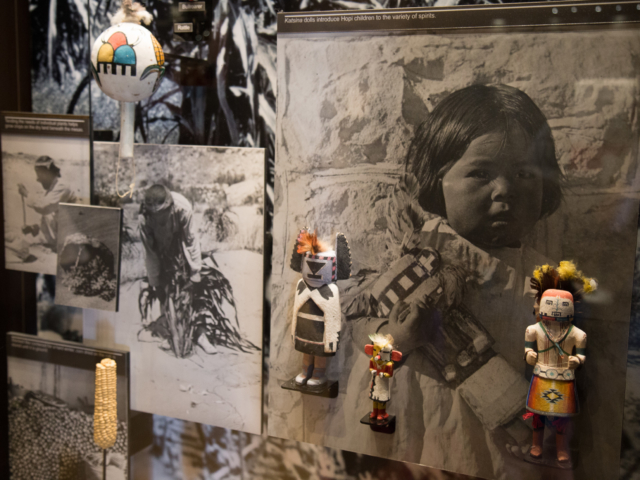Located just 3 miles west of Desert View Point—which marks the easternmost entrance to Grand Canyon National Park—the Tusayan Ruin and Museum is one of the preeminent spots of archaeological discovery in all of Arizona. The attraction is composed of two parts. The Ruin portion of the site contains the remains of a Pueblo village that National Park Service officials believe to be some 800-years old. Nearby you can tour the second part of the site, the Tusayan Museum. This interactive facility contains a variety of exhibits designed to enhance visitors’ understanding of the unique human history of the Grand Canyon area.
Tusayan Ruin and Museum History and Background
Historians estimate that some sort of human civilization has existed in the Grand Canyon area, in one form or another, for 12,000 years—with regular human habitation here taking place for approximately the past 4,000 years. Given this expansive history of life in the region, there are likely countless archaeological remains existing in the area. However, National Park Service officials believe they have only thoroughly investigated such remains in a scant 5% of the Park. Thus, to this point in time Tusayan Ruin and Museum represents the most complete/thorough archaeological work conducted in the area, a fact which underscores its historical importance to Grand Canyon National Park.
The Tusayan Ruin was first excavated in 1930 by Arizona Puebloans. Additional work, intended to help better preserve the site for future study, was conducted in 1948 and 1965, while the site was added to the National Register of Historic Places in 1974. The Tusayan Museum, as it exists today, was finished in 1934.
What’s at Tusayan Ruin and Museum
The Tusayan Ruin displays all that archaeologists have to this point discovered about the 800-year old Puebloan community that once existed on this site near the South Rim of the Grand Canyon. The site is open to the public from 9:00am to 5:00pm during the summer months. There is a very small trail that goes around the site, granting visitors good viewpoints of the Ruin. Some remains of the walls of a great variety of structures are visible here. The ruins of these prominent buildings include such facilities as experts believe may have once been used for everything from housing, to storing food, to conducting a number of different kinds of religious ceremonies.
Nearby visitors can tour the Tusayan Museum. This small museum offers guided ranger tours and occasional talks on subjects pertinent to the site. It also features a collection of remarkable artifacts found on various archaeological digs conducted throughout Grand Canyon National Park. Tusayan Museum was first built in 1928. It was designed by acclaimed architect Herbert Maier, who also designed the Yavapai Geology Museum. Maier intended for Tusayan Museum to resemble a traditional Hopi structure. It was completed in its current form in 1934.
There are significant amenities to be found near Tusayan Ruin and Museum. From here, your closest best bet for all your Grand Canyon touring needs are the facilities found at Desert View Point. Desert View Point is located just three miles east of Tusayan Ruin and Museum, where it serves as the de facto east entrance to Grand Canyon National Park. There you will find a gas station, a restaurant, a ranger station, a bookstore, and a campground—all of it serviced by ample parking. Desert View Point is also the stop where you can find the famous Desert View Watchtower, another beloved local attraction that the whole family will enjoy touring.
Tips for Visiting Tusayan Ruin and Museum
- The walking trail around Tusayan Ruin is quite flat and very short, making it a perfect stroll for visitors of all ages and abilities.
- The start-time for the ranger-led tours that guide visitors around Tusayan Museum and Ruin vary depending day and season, so make certain to be double-check availability before your trip.
- Tusayan Ruin and Museum is an ever-functioning archaeological site—meaning that it is a place where researchers are always encountering different new pieces of the past. Visitors are reminded frequently that if you find, during your tour, something you think might be a historical artifact, please leave it alone and report it to an on-duty ranger.





